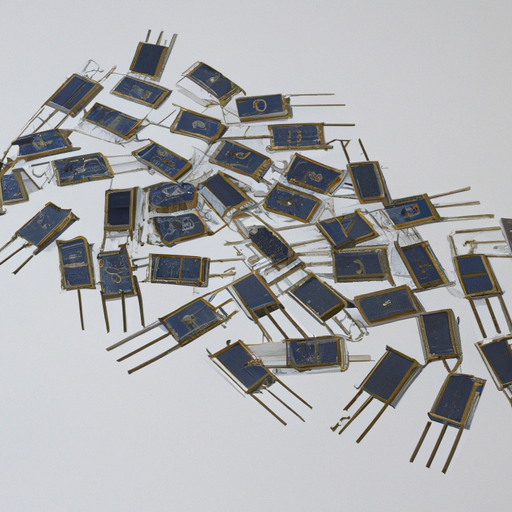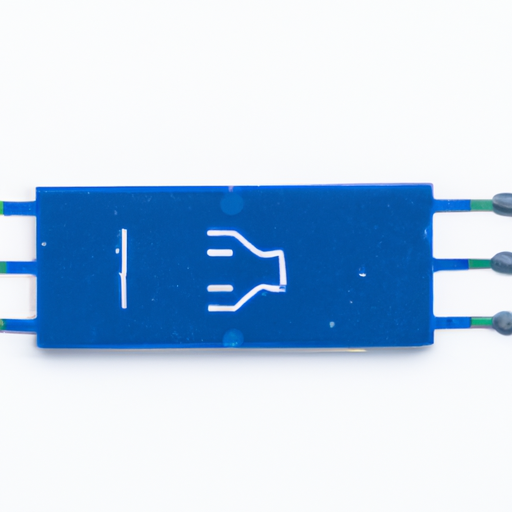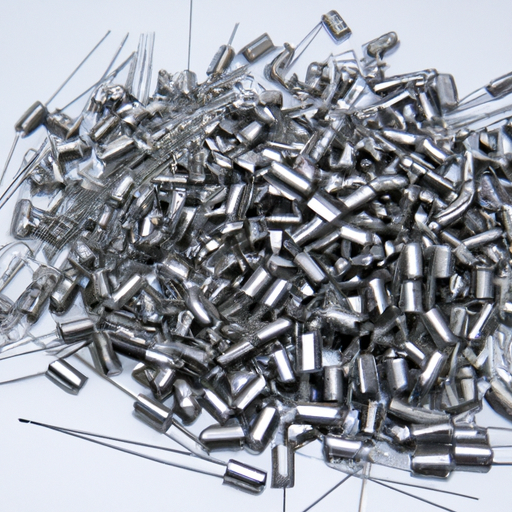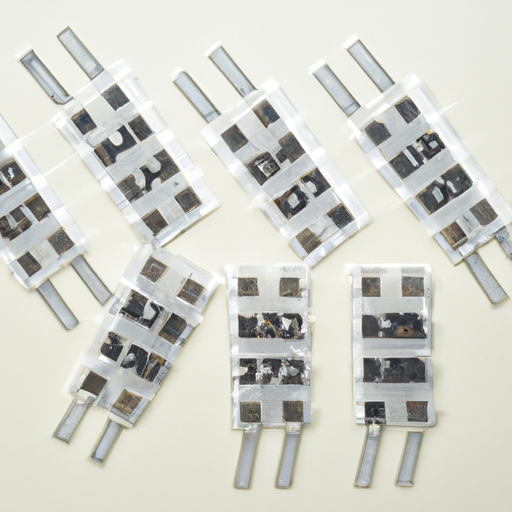What are the Product Features of Sensitive Resistors?
I. Introduction
Sensitive resistors are crucial components in the realm of electronics, playing a pivotal role in various applications that require precise measurements and responses to environmental changes. These resistors are designed to exhibit significant changes in resistance in response to external stimuli such as temperature, light, pressure, or strain. Understanding the features and characteristics of sensitive resistors is essential for engineers and designers who aim to integrate them effectively into their projects. This article will delve into the different types of sensitive resistors, their key features, electrical characteristics, material composition, applications, challenges, and future trends.
II. Types of Sensitive Resistors
Sensitive resistors come in various forms, each tailored for specific applications. Here are some of the most common types:
A. Overview of Different Types
1. **Thermistors**: These are temperature-sensitive resistors that exhibit a significant change in resistance with temperature variations. They are widely used in temperature sensing and control applications.
2. **Photoresistors (LDRs)**: Light-dependent resistors change their resistance based on the intensity of light falling on them. They are commonly used in light-sensing applications, such as automatic lighting systems.
3. **Strain Gauges**: These resistors measure the amount of deformation or strain in an object. They are essential in structural health monitoring and load measurement applications.
4. **Piezoelectric Resistors**: These resistors generate an electrical charge in response to mechanical stress. They are used in sensors and actuators, particularly in applications requiring precise force measurements.
B. Applications of Each Type
Each type of sensitive resistor has unique applications. Thermistors are often found in temperature control systems, while photoresistors are used in light-sensitive devices like streetlights. Strain gauges are critical in engineering applications, such as load cells, and piezoelectric resistors are utilized in microphones and pressure sensors.
III. Key Features of Sensitive Resistors
Sensitive resistors possess several key features that determine their performance and suitability for various applications.
A. Sensitivity
1. **Definition and Importance**: Sensitivity refers to the degree to which a resistor's resistance changes in response to a specific stimulus. High sensitivity is crucial for applications requiring precise measurements.
2. **Measurement Units and Standards**: Sensitivity is often quantified in terms of resistance change per unit of stimulus (e.g., ohms per degree Celsius for thermistors). Understanding these units is vital for selecting the right resistor for a given application.
B. Temperature Coefficient
1. **Explanation of Temperature Coefficient**: The temperature coefficient indicates how much the resistance of a material changes with temperature. It is typically expressed in parts per million per degree Celsius (ppm/°C).
2. **Impact on Performance**: A high temperature coefficient can lead to significant resistance changes, making the resistor more responsive to temperature variations. This is particularly important in applications requiring accurate temperature measurements.
C. Response Time
1. **Definition and Relevance**: Response time is the time taken for a resistor to react to a change in stimulus. Fast response times are essential in applications like safety systems and real-time monitoring.
2. **Factors Affecting Response Time**: Factors such as material properties, size, and environmental conditions can influence response time. Engineers must consider these factors when designing systems that rely on sensitive resistors.
D. Linearity
1. **Importance of Linear Response**: A linear response means that the change in resistance is proportional to the change in stimulus. This is crucial for applications requiring accurate and predictable measurements.
2. **Applications Requiring Linearity**: Linear response is particularly important in analog signal processing and control systems, where non-linear responses can lead to inaccuracies.
E. Stability and Reliability
1. **Long-term Performance**: Stability refers to the ability of a resistor to maintain its performance over time. Reliable performance is essential in critical applications, such as medical devices and industrial monitoring systems.
2. **Environmental Factors Affecting Stability**: Factors like humidity, temperature fluctuations, and exposure to chemicals can impact the stability of sensitive resistors. Engineers must account for these factors in their designs.
F. Size and Form Factor
1. **Miniaturization Trends**: The trend towards miniaturization in electronics has led to the development of smaller sensitive resistors. This allows for more compact designs and integration into smaller devices.
2. **Impact on Design and Integration**: The size and form factor of sensitive resistors can influence circuit design and layout. Engineers must consider these factors to ensure optimal performance and integration.
IV. Electrical Characteristics
Sensitive resistors also exhibit specific electrical characteristics that are crucial for their performance in circuits.
A. Resistance Range
1. **Variability in Resistance Values**: Sensitive resistors can have a wide range of resistance values, depending on their type and application. This variability allows for flexibility in circuit design.
2. **Importance in Circuit Design**: Understanding the resistance range is essential for selecting the right resistor for a specific application, ensuring compatibility with other circuit components.
B. Power Rating
1. **Definition and Importance**: The power rating indicates the maximum power a resistor can handle without overheating. It is a critical parameter for ensuring safe and reliable operation.
2. **Implications for Usage**: Selecting a resistor with an appropriate power rating is essential to prevent failure and ensure long-term performance in various applications.
C. Voltage Coefficient
1. **Explanation of Voltage Coefficient**: The voltage coefficient describes how the resistance of a resistor changes with applied voltage. It is an important consideration in high-voltage applications.
2. **Effects on Circuit Performance**: A high voltage coefficient can lead to significant resistance changes under varying voltage conditions, impacting circuit performance and accuracy.
V. Material Composition
The materials used in sensitive resistors significantly influence their performance characteristics.
A. Common Materials Used
1. **Semiconductor Materials**: Many sensitive resistors, such as thermistors and photoresistors, are made from semiconductor materials, which exhibit significant changes in resistance with temperature or light.
2. **Metal Films**: Metal film resistors are known for their stability and precision, making them suitable for applications requiring high accuracy.
3. **Conductive Polymers**: These materials are increasingly used in sensitive resistors due to their flexibility and potential for miniaturization.
B. Impact of Material on Performance
1. **Temperature Range**: The choice of material affects the operational temperature range of the resistor, influencing its suitability for specific applications.
2. **Sensitivity and Stability**: Different materials exhibit varying levels of sensitivity and stability, impacting the overall performance of the sensitive resistor.
VI. Applications of Sensitive Resistors
Sensitive resistors find applications across various industries, each leveraging their unique features.
A. Consumer Electronics
In consumer electronics, sensitive resistors are used in devices like thermostats, cameras, and smartphones, where accurate measurements are essential for functionality.
B. Industrial Applications
In industrial settings, sensitive resistors are employed in monitoring and control systems, ensuring safety and efficiency in processes such as manufacturing and energy management.
C. Medical Devices
Sensitive resistors play a critical role in medical diagnostics and monitoring, where precise measurements can be a matter of life and death. They are used in devices like blood glucose monitors and temperature sensors.
D. Automotive Industry
In the automotive sector, sensitive resistors are integral to safety and performance systems, including airbag deployment sensors and engine temperature monitoring.
VII. Challenges and Limitations
Despite their advantages, sensitive resistors face several challenges and limitations.
A. Environmental Sensitivity
1. **Effects of Humidity and Temperature**: Sensitive resistors can be affected by environmental conditions, leading to inaccurate readings or performance degradation.
B. Calibration and Maintenance
1. **Importance of Regular Calibration**: Regular calibration is essential to ensure the accuracy and reliability of sensitive resistors, particularly in critical applications.
C. Cost Considerations
1. **Balancing Performance and Cost**: While high-performance sensitive resistors may offer superior features, they can also be more expensive. Engineers must balance performance requirements with budget constraints.
VIII. Future Trends in Sensitive Resistor Technology
The field of sensitive resistors is evolving, with several trends shaping their future.
A. Innovations in Materials and Design
Advancements in materials science are leading to the development of new types of sensitive resistors with improved performance characteristics, such as higher sensitivity and stability.
B. Integration with Smart Technologies
As the Internet of Things (IoT) continues to grow, sensitive resistors are being integrated into smart devices, enabling real-time monitoring and control.
C. Potential for Increased Sensitivity and Miniaturization
Future developments may lead to even more sensitive and compact resistors, allowing for their use in a broader range of applications.
IX. Conclusion
In summary, sensitive resistors are vital components in modern electronics, offering unique features that enable precise measurements and responses to environmental changes. Understanding their types, key features, electrical characteristics, material composition, applications, challenges, and future trends is essential for engineers and designers. As technology continues to advance, the role of sensitive resistors will only become more significant, paving the way for innovations across various industries. By staying informed about these developments, professionals can harness the full potential of sensitive resistors in their designs and applications.












